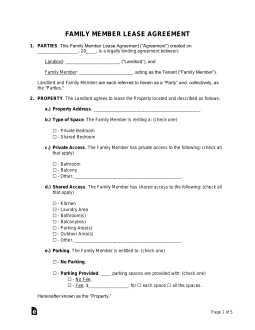Updated March 24, 2024
A family member lease agreement allows a person related by blood or marriage to pay rent while living in the same household as the landlord. It outlines the responsibilities of each party while maintaining their rights as landlord and tenant.
Why a Lease is Important (with Family)
- Outlines the Lease Terms – Allows both parties to agree to the rent amount and when it is paid.
- Tenant’s Responsibilities – If the tenant is responsible for making specific payments (e.g., security deposit, fees, utilities, etc.)
- Changing/Terminating the Lease – To include terms for rent increases or lease termination.
- Eviction Process – A family member is treated as a month-to-month tenant without a lease. This means they are entitled to 30 days’ termination notice when asked to leave.


